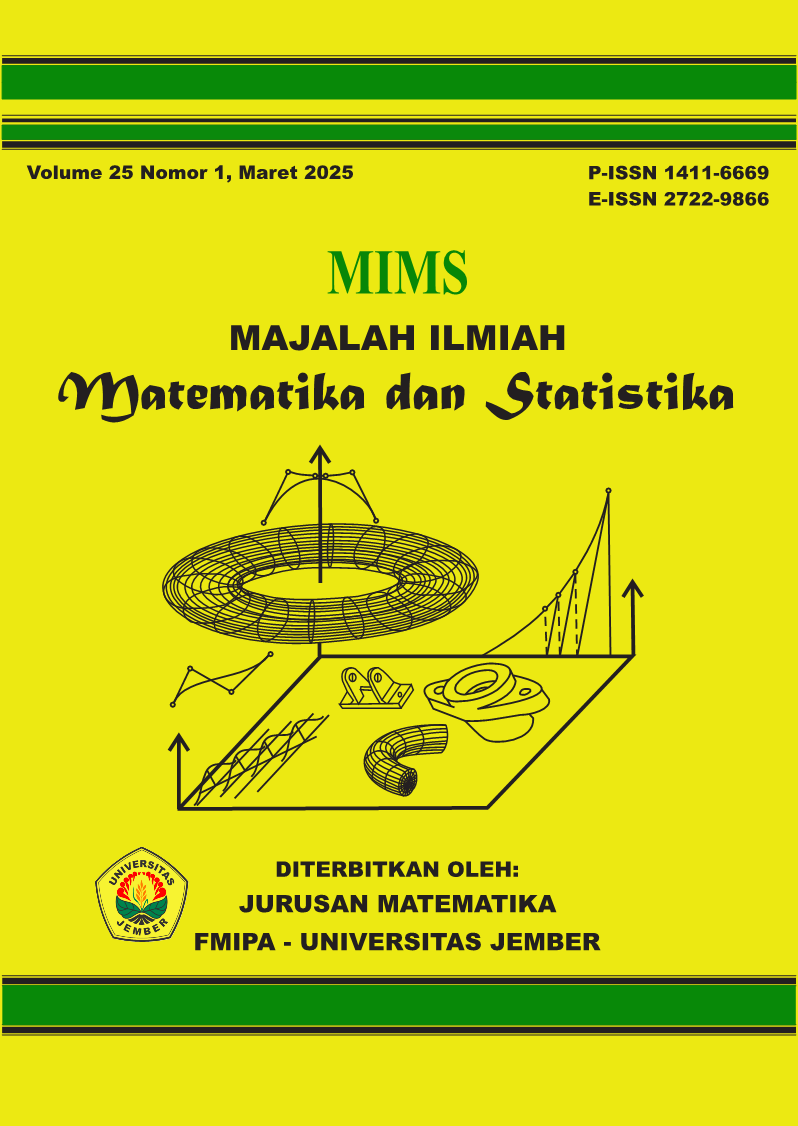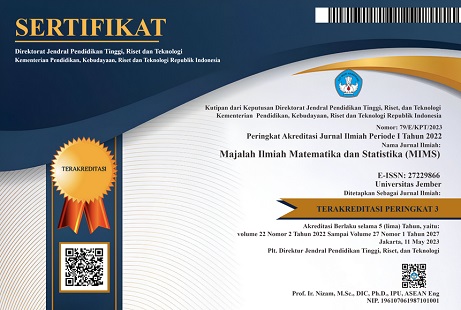Chaotic outbreak in discrete epidemic model with vaccination and quarantine interventions and limited medical resources
DOI:
https://doi.org/10.19184/mims.v25i1.53689Abstract
The spread of infectious diseases can be analyzed dynamically using a discrete dynamic system. The characteristics of the infectious disease phenomenon are interesting to study as parameters considered in a dynamic system. Some of these include vaccination interventions, quarantine, or even an open condition such as limited medical resources. Analysis of a discrete epidemic model system with those three factors can be conducted to understand each of their impacts on the dynamics of disease spread within a population or even to determine the potential for a chaotic outbreak. In this study, an epidemiological model was formulated considering these three factors. Numerical simulations were also conducted to directly observe the influence of these three factors on the dynamics of disease spread. Additionally, efforts to control chaos were also implemented in the system. The limitation of medical resources affects the spread of diseases. Because the coverage of medical resources is limited, it can cause a high surge in cases within the population. This phenomenon of case surges can subsequently be mitigated by vaccination parameters such as vaccine efficacy and the rate of vaccine distribution within the population. Furthermore, the formulated system has the potential to exhibit chaotic behavior when the infection rate increases, in other words, the disease becomes an uncontrollable and unpredictable epidemic. Next, the thing that can be done to suppress this chaotic phenomenon is to directly intervene in the rate of disease spread within the population.
Downloads
Downloads
Published
Issue
Section
License
Copyright (c) 2025 Majalah Ilmiah Matematika dan Statistika

This work is licensed under a Creative Commons Attribution-NonCommercial 4.0 International License.







